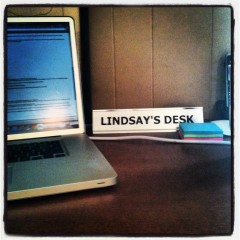 Being in close proximity to each other is how we have traditionally harnessed, and leveraged, our collective knowledge.
Being in close proximity to each other is how we have traditionally harnessed, and leveraged, our collective knowledge.
Then along came technology.
Asking if technology has changed communication is like asking if the concentration of CO2 in the atmosphere has changed the climate.
We inherently know it has, but we are so immersed it’s hardly noticeable.
Sure, we still meet, talk, and work together, but because of technology we are not as closely tethered to each other anymore.
Do we need to come together, face-to-face, to build consensus or can we do that remotely too?
How does this affect corporate culture?
Culture Shock
Culture can be defined as common behaviors stretched across a period of time, or as people acting on stimuli in close proximity to each other. Without direct proximity, would culture not exist or is common behavior alone enough to form culture?
When you think about a corporation, the probability that each person is in direct contact with more than a few people at a time is unlikely. Employees can’t possibly interact with more than the people in their immediate surroundings on a regular basis.
Regardless, humans are social creatures and they will always seek a way to express themselves to their tribes…in close proximity or not. The result, in a corporation, is culture. Proximity is relative. Behavior is what drives culture.
The New Reality of an Emerging Workforce
It’s common to be connected somewhere: At home, to and from work, and at the office. For the knowledge worker the freedom to work anywhere has become a reality.
The multitude of readily available cloud-based tools is breaking down the barriers of fixed work environments, and continues to support more efficient and effective ways for business to be conducted.
The next generation are key influencers in demanding the opportunities created by flexible work space solutions. What happens when the next generation emerges beyond them? What will they demand? It won’t likely be physical space.
Think of this as the new reality of business and the new reality of an emerging workforce.
How Far and Fast Will the Pendulum Swing?
It will depend on how secure corporations feel with the virtual world. Cost to maintain technology will always be a driver of a corporation’s ability to respond to the new demands of the knowledge worker.
The management response to the idea of a transient workforce is still tenuous. The idea that visibility – being in the office – means results is going to have to change as a workforce evolves alongside technology.
The idea of results-based performance is one of the most challenging hurdles when addressing the evolution of a workforce. Open-minded and trusting business relationships are still opportunistic for most of the corporate world.
The End of the Corner Office?
Utilization and space efficiency studies can expose ‘space waste’ and help organizations begin to understand better how space can be used. For example, senior management, often out of the office, in meetings, or building business may never need dedicated space. Yet, we often see quite the opposite approach.
It’s not uncommon, by current standards, for the average footprint of workspace to be in the range of 225 square feet per person.
Considering ideas, such as shared or bookable work space, these established standards can be easily challenged. Studies have shown even a conservative space reduction of 20 percent is achievable in today’s technology driven workforce. And that can significantly reduce costs borne by real estate, operational requirements and physical assets such as furniture and fixtures.
It takes highly innovative attitudes to take advantage of these opportunities, and in many cases operational risk inhibits experimentation. That’s where the idea of scalability becomes a viable strategy to consider.
Space Optimization Needs Time to Become Effective
Implementing new workstyles requires flexible space that can be changed to accommodate the evolution of a corporation’s functional needs. If space is configured in a way to allow low cost change and reconfiguration, a corporation can be well-positioned to respond to refinements in its work space solutions strategy over time.
The value of fixed space needs to be carefully examined. Every business will have a need for some fixed built-in core operations space, but the remainder can be executed as a furniture solution. Furniture systems can offer solutions for all types of workspace but what’s most important is its inherent flexibility.
A sound real estate strategy coupled with a strategic furniture partnership can bring cost effective change management strategies to life allowing space needs to evolve as the business lifecycle evolves with the changing workforce.
Work Space Solutions
Post-occupancy evaluations (POE) can effectively demonstrate affect operations, employee productivity, culture, and the bottom line. A POE can inform the change management process, and the evolution of space can become part of a corporation’s strategic plan.
The strategic plan can inform future initiatives, drive case studies, and through employee engagement can become part of an organizations culture. Continuous improvement, accountability, and partnership become the cornerstones of such an initiative.
Let me leave you with this thought: Think about workspace as hotel rooms. We use them temporarily, then move on to another location to complete whatever else we have to do. We use hotel rooms to park ourselves, recharge, and store our belongings when we are travelling. They’re simply a touch point in our day.
Why can’t your workspace be considered as transient – and as flexible – as a hotel room?